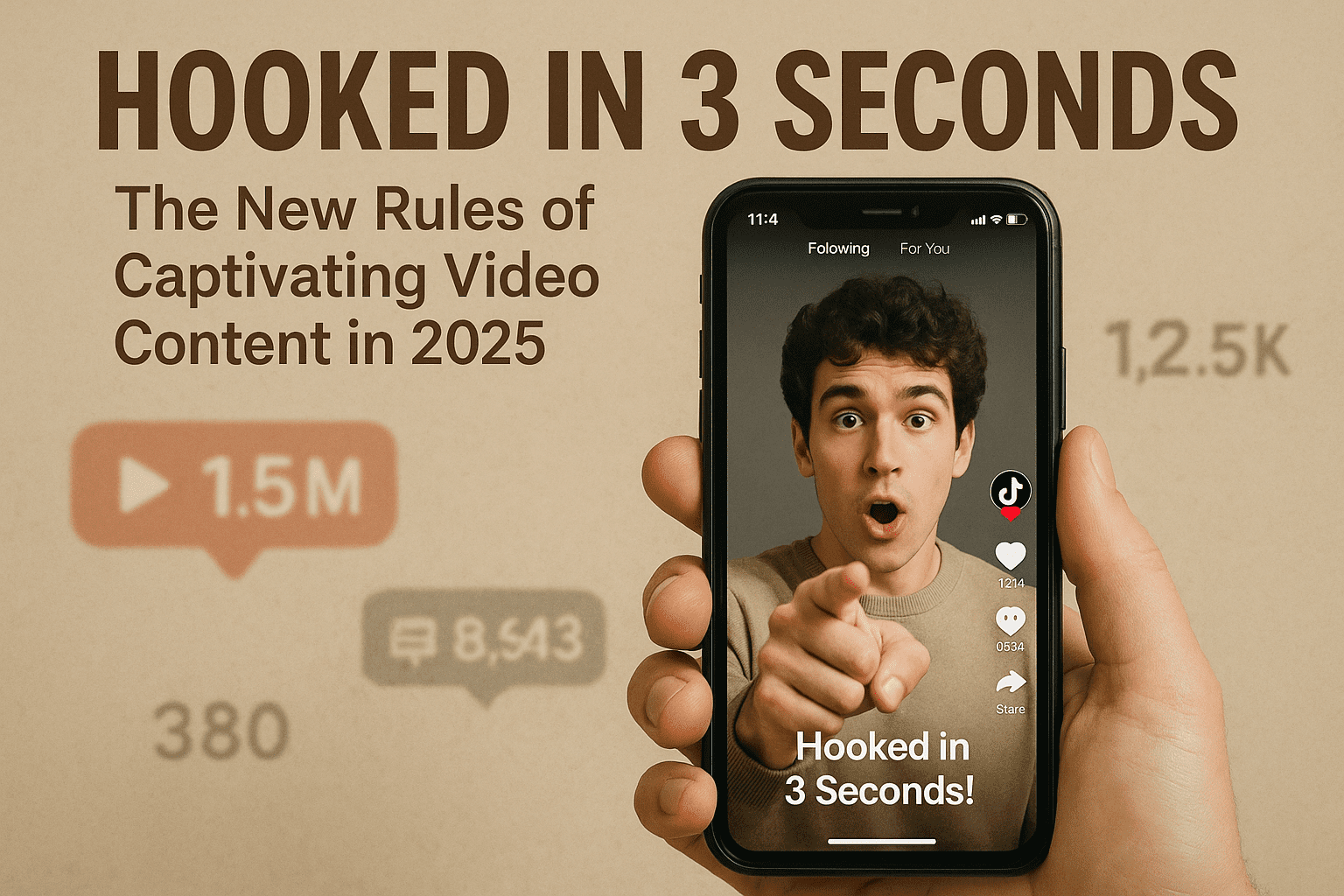
The average attention span in 2025? Just under 3 seconds. That’s all the time you get to convince a viewer to stop scrolling, lean in, and stay. Video content is still king—but if you’re not mastering the first few seconds, your content isn’t converting. Whether you’re creating for TikTok, Instagram Reels, YouTube Shorts, or even LinkedIn, the ability to hook fast and deliver value quickly is your most important skill.
If you’re a business owner, creator, or entrepreneur looking to grow your brand and influence, learning the new rules of video engagement is no longer optional—it’s essential.
Here’s how to stop the scroll and start winning attention.
1. Open With a Pattern Interrupt
A pattern interrupt is something unexpected that disrupts the viewer’s normal scrolling behavior. It breaks the visual rhythm and forces attention.
Action Step: Begin your video with a surprising question, dramatic visual, sound effect, or even an exaggerated reaction that immediately stands out.
Examples:
- “You’re wasting 80% of your marketing budget—and here’s why.”
- A quick zoom-in paired with bold on-screen text: “STOP DOING THIS!”
Why It Works: People are conditioned to scroll past familiar formats. Pattern interrupts create curiosity and trigger the viewer’s brain to pause.
2. Say the Benefit in the First Sentence
Your first sentence should tell the viewer why they should care—immediately. Avoid intros, background, or context at the top. Lead with the outcome they want.
Action Step: Use this fill-in-the-blank format to write your hook:
- “Here’s how to [result] without [pain point].”
- “If you want to [goal], stop doing [mistake].”
Stat to Know: Videos with benefit-first messaging in the first 3 seconds had 28% higher completion rates on average, according to a 2024 Vimeo analytics report.
3. Use On-Screen Text to Reinforce Your Hook
Most short-form videos are watched without sound—especially on mobile. That means your message needs to land visually as well as verbally.
Action Step: Add bold, punchy on-screen text that supports your hook. Use animated text for emphasis and keep it under 10 words.
Bonus Tip: Position your text at the top third of the screen to avoid being cut off by platform overlays (e.g., like/comment/share buttons).
4. Cut the Fluff—Every Second Counts
In short-form video, less is more. Long intros, slow transitions, or too much explanation can kill retention. The goal is to deliver value fast.
Action Step: Stick to one idea per video. If you have five points, make five videos. Edit tightly—aim for 15–45 seconds with quick cuts and clean visuals.
Tools to Use: CapCut, Adobe Express, or InShot for snappy editing and caption overlays.
5. End With a Strong CTA That Feels Native
Your ending matters as much as your beginning. Guide your viewers clearly to the next action, whether that’s following you, clicking a link, or saving the video.
Action Step: Use CTAs that match the platform and the mood of your content:
- “Save this for when you launch next week.”
- “Follow for more daily business tips.”
- “DM me ‘FUNNEL’ if you want this step-by-step.”
Pro Tip: Repeat the CTA both visually (on-screen) and verbally (in your script) to double its impact.
Conclusion: The Hook Is the New Headline
Your ability to create scroll-stopping hooks is now your most valuable creative skill. The first 3 seconds set the tone for whether your message gets heard or ignored. When you lead with value, design for silence, and edit for speed, your videos won’t just be watched—they’ll be remembered.
Your Move: Choose one of your recent video ideas and rework the first 3 seconds using today’s tips. Record it, test it, and measure the drop-off rate. The faster you master the hook, the faster your brand grows.


